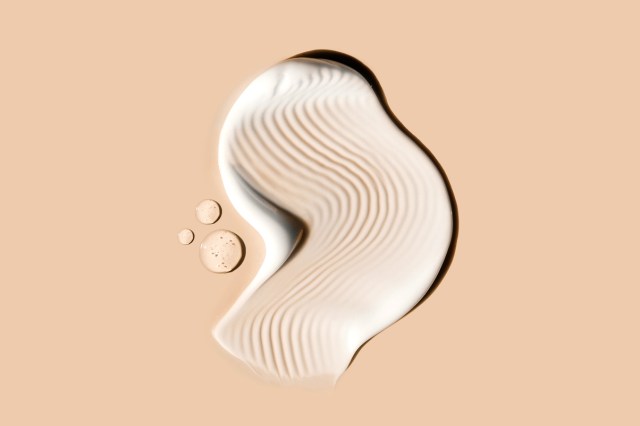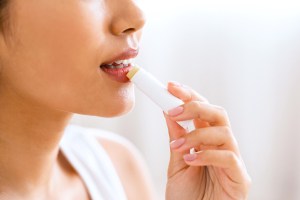We independently evaluate all recommended products and services. If you click on links we provide, we may receive compensation.
Sunscreen was first developed in the 1940s, but it wasn’t until years later that the industry really began to take off. For decades, sunscreen was developed primarily for functionality — the user experience wasn’t often considered. As a result, sunscreen wasn’t always the most enjoyable product to use: Many had a greasy feel or left behind a chalky white residue that had people skipping SPF altogether. Fortunately for our skin, a lot has changed within the past decade or so.
Now, we have a wealth of sunscreens to choose from in every texture and finish imaginable. But with so many options available, it can feel overwhelming to find the best formula for your skin type. We understand the struggle, and we’re here to help simplify the process. We tapped board-certified dermatologist Dr. Abigail Waldman, M.D., FAAD for her expertise on choosing the right sunscreen for you. Find her advice ahead, plus a look at our favorite sunscreens for different skin types.

The Basics of Sunscreen
Everybody, regardless of skin type or tone, should wear a broad-spectrum sunscreen with an SPF of at least 30 every day, Dr. Waldman says. And by every day, we mean every day — neither chilly temps nor cloudy skies are an excuse to skip the SPF. (In fact, research shows that even dense clouds absorb only around 50% of UV rays.) It’s also important to use the right amount of sunscreen. The Skin Cancer Foundation recommends using about 1 ounce (or a shot glass’s worth) of sunscreen for your whole body. To protect your face, you’ll want to use about two fingers’ worth, or a nickel-sized dollop.
Finally, there’s the matter of reapplication. Generally speaking, you should reapply your SPF every two hours. If you’re sweating, swimming, or toweling off, however, you may need to reapply more frequently.

Finding the Right Sunscreen for Your Skin Type
First, you need to determine what your skin type is. Generally, skin falls into one of six categories: oily, dry, normal, combination, sensitive, or acne-prone. A dermatologist can help you identify where your skin falls on the spectrum. Once you have that figured out, you can get started on finding a sunscreen that suits your skin’s unique needs.
Oily Skin: If you have oily skin, standard cream sunscreens may feel heavy or greasy on your skin. Instead, look for a water-based sunscreen specifically designed for oily skin. There are plenty on the market, but we find that Korean sunscreens are especially great for oily skin types. We love COSRX Daily Vitamin E Vitalizing Sunscreen SPF 50+, which contains silica to help control excess shine.
Dry Skin: Dry skin needs lots of moisture, which you can get with an SPF-infused hydrator like CeraVe AM Facial Moisturizing Lotion. The gentle SPF 30 formula contains hyaluronic acid, niacinamide, and ceramides to help moisturize the skin and strengthen your skin barrier. Just remember that proper application is a must: Dr. Waldman says to apply “at least two fingers’ worth of moisturizer, the same way you’d apply sunscreen to your face.” Simplify reapplication by reaching for a sunscreen spray — we’re particularly fond of Vacation’s Super Spritz SPF 50. Because it can be hard to gauge coverage with sprays, the AAD recommends to “spray until your skin glistens,” rub it in thoroughly, and avoid sprays on windy days.
Combination Skin: Finding a sunscreen that suits combination skin can be tricky, as it needs to be hydrating enough for dry areas but not so rich that it leaves oilier areas looking greasy. Options for sensitive and acne-prone skin usually work well. (Keep reading for those!)
Sensitive Skin: If your skin is easily irritated or prone to redness, Dr. Waldman advises using a mineral sunscreen, which “tend[s] to be better tolerated than chemical sunscreens,” she says. She also recommends seeking out a fragrance-free formula, as artificial fragrance can trigger irritation in those with sensitive skin. She’s a fan of Senté Invisible Shield SPF 52 Tinted Mineral Sunscreen, which contains zinc oxide and titanium dioxide as well as a slew of skin-supporting antioxidants.
Acne-Prone Skin: If you find that sunscreens tend to break you out, Dr. Waldman says to make sure your SPF of choice is oil-free and noncomedogenic to ensure it won’t clog your pores. Fortunately, there are plenty of acne-friendly sunscreens on the market. We love La Roche-Posay Anthelios UV Correct Face Sunscreen SPF 70 with Niacinamide and EltaMD UV Clear Broad-Spectrum SPF 46.
Normal Skin: Lucky you. You can generally get away with wearing any sunscreen without too many issues. Play around with trendy new glowy versions, such as InnBeauty Project Mineral Sun Glow Broad Spectrum SPF 43 PA +++ and Supergoop! Glowscreen SPF 40 Sunscreen.
This article is for general informational purposes only.
Affiliate Disclaimer Medical Disclaimer












 Unique Beauty is free for all users.
Unique Beauty is free for all users.